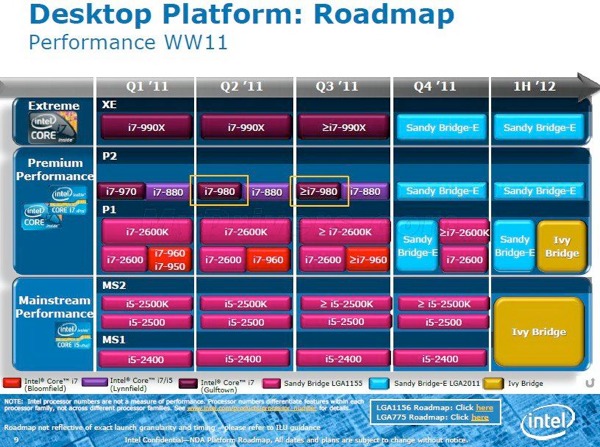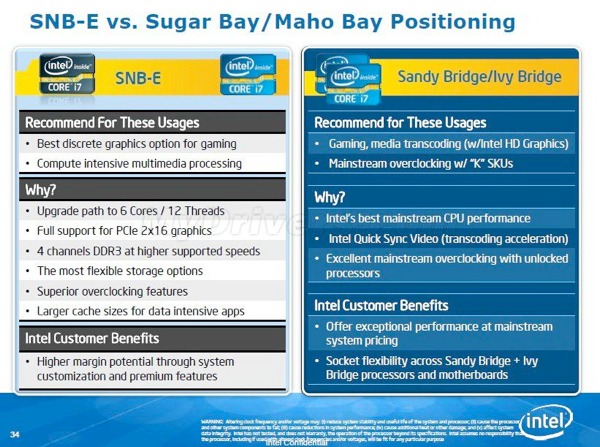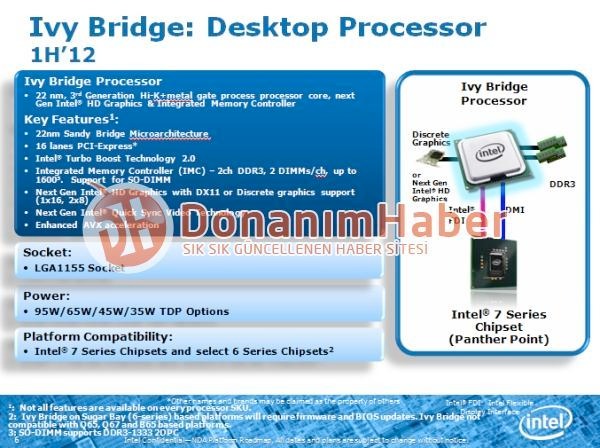A new Intel roadmap has recently appeared online, bringing new details on the upcoming enthusiast oriented Sandy Bridge-E along with Ivy Bridge based processors which Intel plans to release during the first half of 2012.
According to the roadmap, the high end Sandy Bridge-E will be launched in Q4 2011 and besides targeting the super expensive $999+ segment, apparently it will also include models in premium performance P1 and P2 ranges, which are currently headed by Core i7 970 and 2600 models. Coinciding with a previous leak detailing the X79 platform, the slides mention full support for two PCI-Express x16 graphics cards, the new quad-channel DDR3 interface, larger cache sizes and flexible storage options -- the X79 chipset will purportedly include a 10-port SATA 6Gbps controller.

The roadmap also describes Intel's 22nm die shrink of Sandy Bridge, codenamed Ivy Bridge. Planned for the first half of 2012, the chips will be seamlessly compatible with existing LGA1155 platforms and "Cougar Point" P67, H67, H61, Z68, chipsets, although boards based on a newer 7-Series "Panther Point" chipset will also be available, with a newer FDI interface supporting up to three displays running simultaneously and an integrated USB 3.0 controller.
Intel's 22nm Ivy Bridge chips will feature a new dual-channel DDR3 memory controller with official support for DRAM speeds of up to DDR3-1600 MHz, the usual PCI-Express 2.0 x16 hub, Turbo 2.0 support, a new graphics core with DirectX 11 support, and TDP ratings ranging between 35W and 95W.
Naturally there's no mention of pricing since these chips are still one year away from their launch. That said, we know they are intended as successors to Sandy Bridge Core i5 and i7 chips in the mainstream and performance markets, which currently range from around $185 up to $320 at online retailers.

